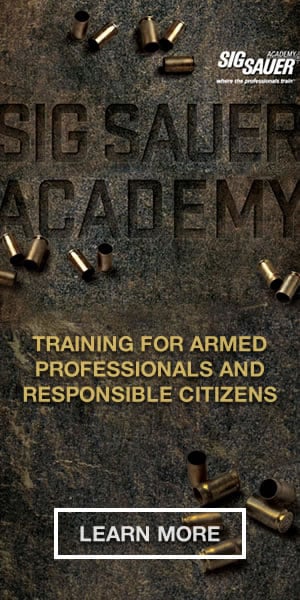In the last few years, exacting .22 rimfire replicas of famous centerfire rifles and carbines have literally exploded in popularity. Because the lineup of available replica arms continues to expand on an almost daily basis, it is possible to lose sight of, or even forget about the joys and utility to be found in owning and shooting a traditional semi-automatic rimfire rifle.
Don't get me wrong, there's a place for everything. A good replica .22 rimfire rifle (or pistol for that matter) makes an excellent understudy for the full power original, if not an adequate defensive or utility piece in its own right. It is a very popular form of the gun maker's art, and the attention to detail is often uncanny. But sometimes it's good to get back to the basics and consider a more traditional .22 rimfire rifle.
Traditional .22's have operating systems similar to their larger counterparts. Bolt action, lever action, pump and semi-automatic operating systems are scaled down or modified from the center fire original because a full sized gun isn't needed to provide a safe shooting platform for the .22 LR caliber. The Most traditional .22 rifles can easily be carried afield without a sling. The semi-automatic Ruger 10/22 is once such traditional .22 rimfire rifle.
The very first real firearm I owned was a Ruger 10/22, so-named because of its ten shot magazine capacity and its caliber. My father had taught my brother and I to shoot when we were young using a pair of very fine .22 rifles-a beautiful Marlin 39 lever action and a classic Winchester Model 62 pump action. These were great rifles, and my brother and I still own them. But those guns were belonged to my dad-the Ruger 10/22 was all mine.
I was either 13 or 14 years old when I got that Ruger for Christmas. It was an original carbine configuration standard version. As such it had a nice hardwood stock (no checkering) with an old style curved buttplate, black alloy receiver, blued steel barrel, and black barrel band on the front that had a mounting point for a sling. The now very famous 10 shot Ruger Rotary Magazine fit flush with the stock, and made the 10/22 very easy handling, and gave it about as perfect balance as is possible on a rifle that size. The receiver was grooved for a scope-I never mounted one-because the sights consisted of an excellent brass bead front with an adjustable open rear. They were quick to acquire, especially with my young eyes.
Over the many years of 10/22 production-continuous since 1964-many variations of the 10/22 have found their way into the Ruger catalogue. As of this moment, I count 48 different variants on the Ruger website, including a couple of models designed to make the 10/22 look even more like an M1 carbine than the basic model has always moderately resembled. Much to my delight when researching this article, I found that the same exact configuration of the 10/22 that I had as a youth is still available-and it's darn hard to beat the original.
I took my 10/22 Carbine with me to Boy Scout Camp to shoot on the rifle range back in the day when you could do such things. The brass bead sight setup on it is one of the best sighting systems ever designed and would have been deadly on small game had I been a hunter. I shot the best open sighted .22 rimfire group of my life with my 10/22 on the official 50 foot NRA .22 Rimfire Bullseye Target. All five shots were in one single hole from an unrested prone position. This is outstanding accuracy from any semi-automatic .22 rifle, and is why I never mounted a scope on it. If you have never used a brass bead sighting arrangement on a firearm, you should consider it them. They are capable of fine precision and rapid acquisition. The brass bead picks up ambient light quite well even when conditions are dimly lit. I prefer this sighting arrangement over the the light gathering color pipes that are available on other 10/22 variants. A brass bead sight arrangement may be "old school", but often one finds that old school is often the best school.
The 10/22 rotary magazine is one of the easiest .22 rimfire magazines to load, and once loaded spare rotary magazines can easily be carried in a pocket. It is also highly reliable and durable. I don't recall ever having any issues with it. While 15 and 25 shot magazines are available, they are unnecessary unless you are considering the 10/22 as a competition gun. I've found that extended magazines can be prone to malfunction-a problem I have seen with aftermarket magazines in particular. Unless you are a competition shooter, I would stay away from the extended magazines. They detract from the wonderful "snap to the shoulder" shooting and handling qualities of the original 10/22 Carbine.
I owned that 10/22 until getting interested in handgun shooting more than rifle shooting somewhere around age 17, at which time I traded the 10/22 for a Ruger Mk1 target pistol at a local gunstore (of course my father had to handle the transaction for me). While that first firearms trade began my long term affinity for handguns, I won't ever forget that 10/22, and that all-time best five shot group.
If you don't like the plain Carbine version of the Ruger 10/22, there are at least 47 other variants to choose from, with prices ranging roughly from $210 to $450. Make sure you give the original Carbine a look. You may decide it's the one for you.


